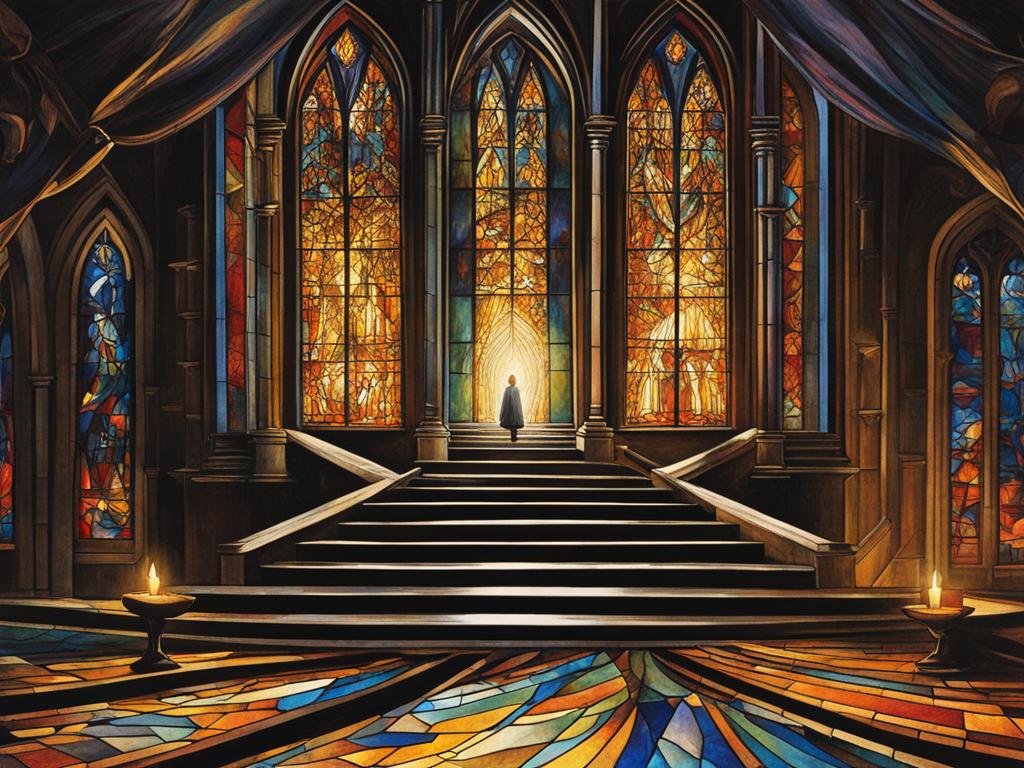No products in the cart.
Echoes of Eternity: Christian Mystics Across Time and Tradition
This post contains affiliate links.
Christian mysticism is a rich and profound tradition that has been part of the Christian community for centuries. Mysticism within Christianity encompasses various mystical practices and theories that seek a deeper connection with the divine.
From the early days of the church to the present, Christian mystics have delved into the realms of the spirit, uncovering hidden truths and experiencing profound encounters with God.
Christian mysticism has been particularly influential in Roman Catholic and Orthodox Christianity, which has been intertwined with mystical theology. The experiences of Christian mystics are often framed within theological approaches to God, providing unique insights and perspectives on the nature of faith and spirituality.
In the early centuries of Christianity, mysticism played an integral role in the church’s life. Prophets and spiritual visionaries actively participated in the community, emphasizing the pursuit of union with Christ and deepening spiritual consciousness.
The writings of influential figures like the Apostle Paul and the Gospel According to John provide glimpses into the mystical aspects of early Christianity.
During the High Middle Ages in Europe, mysticism flourished and gained authoritative recognition. This was a time of immense social change, and mystics emerged as enlightened leaders who synthesized the traditions of Christianity and offered fresh perspectives to the Christian community.
Mysticism in Medieval Times
During the High Middle Ages in Europe, mysticism flourished and held significant influence. This era was characterized by immense social change, and mystics emerged as enlightened leaders who synthesized Christian tradition while introducing innovative models for the Christian community.
Women mystics played a vital role during this period, exerting a profound presence. Medieval mysticism predominantly manifested through visual and affective experiences, with mystics encountering divine visions and experiencing profound love for God.
Women mystics, including Hildegard of Bingen, Clare of Assisi, Angela of Foligno, and Julian of Norwich, held esteemed positions as spiritual guides and leaders. Their mystical encounters were perceived as divine gifts, enabling them to perceive and convey profound truths.
These mystics fostered spiritual awakening, awakening truth in others’ lives. They utilized their experiences to transform their perceptions and their reality.
Takeaways:
- Christian mysticism is a longstanding tradition within Christianity.
- It has been particularly influential in Roman Catholic and Orthodox Christianity.
- Early Christianity emphasized a deep spiritual connection and union with Christ.
- The High Middle Ages witnessed a flourishing of mysticism and visionary experiences.
- Mystics like Hildegard of Bingen and Julian of Norwich played significant roles as spiritual leaders and visionaries.
Four Great Women Mystics
The lives and writings of four remarkable women mystics provide profound insights into their mystical experiences and teachings. Hildegard of Bingen, a Benedictine abbess, had visions from a young age and became a respected prophet and spiritual leader.
She firmly believed that all her knowledge came from a mysterious source, and she documented her visions and experiences in works like Scivias.
Hadewijch of Antwerp, a Flemish beguine, expressed her spiritual journey through poetry and letters. Her writings beautifully explore the soul’s yearning for divine love and ultimate union with God.
Mechthild of Magdeburg, a German beguine, penned The Flowing Light of the Godhead, revealing her spiritual odyssey and mystical encounters. According to Mechthild, the human soul possesses the potential to merge with divine love.
Hildegard, Hadewijch, Mechthild, and other women mystics played vital roles in medieval society by offering spiritual guidance and teaching based on their mystical experiences. Their profound insights have left an indelible mark on the spiritual landscape, enhancing our understanding of mystical encounters and our relationship with the divine.
FAQ
What is Christian mysticism?
Christian mysticism refers to the development of mystical practices and theories within Christianity. It involves exploring mystical experiences and theology, particularly in Roman Catholic and Orthodox Christianity.
How did mysticism play a role in early Christianity?
Mysticism played a vital part in early Christianity, with prophets actively involved and a focus on union with Christ. The mystical aspect finds its fullest expression in the letters of Paul and the Gospel According to John.
What was the role of mysticism during the High Middle Ages?
Mysticism was particularly prevalent and authoritative during the High Middle Ages. Mystic leaders who synthesized Christian tradition emerged and proposed new models for the Christian community.
Did women have a significant presence in medieval mysticism?
Yes, women mystics played a crucial role during the medieval period. They were highly respected leaders who provided spiritual guidance based on their mystical experiences.
Who were some notable women mystics during the medieval period?
Hildegard of Bingen, Hadewijch of Antwerp, and Mechthild of Magdeburg were notable women mystics. They had profound mystical experiences and shared their teachings through writings and spiritual guidance.
This post contains affiliate links.










